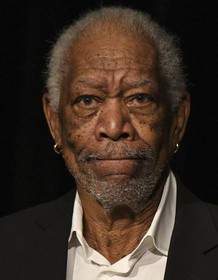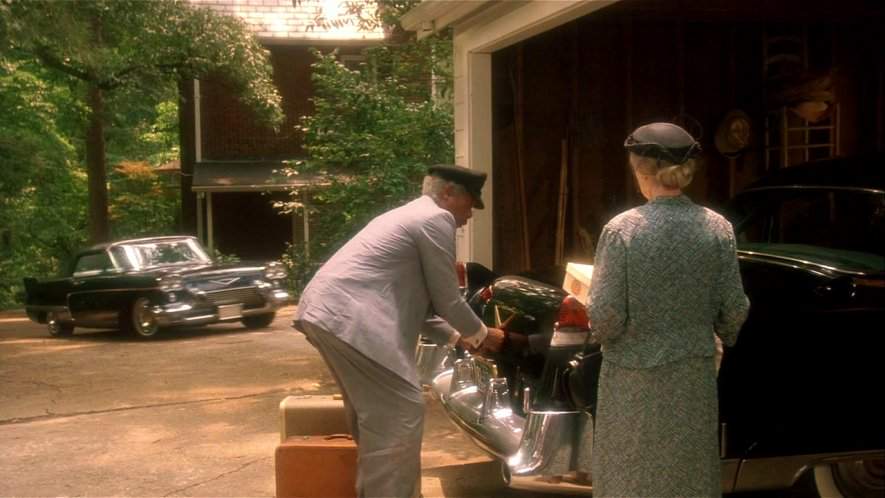Driving Miss Daisy 1989

In Atlanta, elderly widow Daisy Werthan's life takes an unexpected turn after a car accident. Unable to drive, she reluctantly hires Hoke Colburn, an African-American man, as her chauffeur. Over two decades, a touching and unlikely friendship blossoms between them, challenging racial prejudices and societal expectations as they share life's experiences and create a bond that transcends differences.
Does Driving Miss Daisy have end credit scenes?
No!
Driving Miss Daisy does not have end credit scenes. You can leave when the credits roll.
Meet the Full Cast and Actors of Driving Miss Daisy
Explore the complete cast of Driving Miss Daisy, including both lead and supporting actors. Learn who plays each character, discover their past roles and achievements, and find out what makes this ensemble cast stand out in the world of film and television.
External Links and Streaming Options
Discover where to watch Driving Miss Daisy online, including streaming platforms, rental options, and official sources. Compare reviews, ratings, and in-depth movie information across sites like IMDb, TMDb, Wikipedia or Rotten Tomatoes.
Ratings and Reviews for Driving Miss Daisy
See how Driving Miss Daisy is rated across major platforms like IMDb, Metacritic, and TMDb. Compare audience scores and critic reviews to understand where Driving Miss Daisy stands among top-rated movies in its genre.

81
Metascore
7.2
User Score


85%
TOMATOMETER

81%
User Score

72
%
User Score
Take the Ultimate Driving Miss Daisy Movie Quiz
Challenge your knowledge of Driving Miss Daisy with this fun and interactive movie quiz. Test yourself on key plot points, iconic characters, hidden details, and memorable moments to see how well you really know the film.
Driving Miss Daisy Quiz: Test your knowledge on the heartwarming journey of Daisy Werthan and her chauffeur Hoke Colburn in 'Driving Miss Daisy.'
In what year is the primary setting of 'Driving Miss Daisy'?
1948
1956
1963
1971
Show hint
Awards & Nominations for Driving Miss Daisy
Discover all the awards and nominations received by Driving Miss Daisy, from Oscars to film festival honors. Learn how Driving Miss Daisy and its cast and crew have been recognized by critics and the industry alike.
44th British Academy Film Awards 1991
Best Film


Best Adapted Screenplay
47th Golden Globe Awards 1990
Best Motion Picture – Comedy or Musical


Full Plot Summary and Ending Explained for Driving Miss Daisy
Read the complete plot summary of Driving Miss Daisy, including all major events, twists, and the full ending explained in detail. Explore key characters, themes, hidden meanings, and everything you need to understand the story from beginning to end.
In the sweltering summer of 1948, the life of Daisy Werthan, a 72-year-old Jewish widow and retired schoolteacher, unfolded like the pages of a well-worn textbook within the confines of her home in Atlanta, Georgia. Idella, her devoted black housekeeper, was her only companion, and Miss Daisy’s days were characterized by routine and solitude. However, everything changed dramatically when she accidentally drove her 1946 Chrysler Windsor into her neighbor’s yard, which led her son Boolie to step in with a solution: a Hudson Commodore and the assistance of Hoke Colburn, a 60-year-old black chauffeur. As Hoke navigated Miss Daisy through the labyrinthine streets of the city, Boolie reminded him that he was essentially obligated to be her driver, regardless of Miss Daisy’s early protests.
Initially, Miss Daisy was adamant about maintaining control behind the wheel, but Hoke’s steadfast patience and gentle approach gradually wore down her defenses. Their journey across Atlanta transformed into a shared experience, allowing Hoke to learn unexpectedly, particularly when Miss Daisy imparted her knowledge of reading to him. The spring of 1963 brought significant change with the passing of Idella, prompting Miss Daisy to reassess her priorities and place more duties on Hoke, trusting him to handle both cooking and driving.
As time flew by, Hoke displayed sharp business acumen, acquiring the cars he used to chauffeur Miss Daisy and negotiating higher wages from Boolie. Unbeknownst to her, Miss Daisy was also grappling with her own biases when her synagogue experienced bomb threats, intertwining her life with the turbulent social landscape marked by the civil rights movement.
As Miss Daisy navigated these challenging times, she felt compelled to attend a dinner where Dr. Martin Luther King Jr. was to speak. Initially unsure about inviting Hoke, she ultimately extended an invitation just before the event. Although he accepted with some discomfort, Hoke listened to the impactful speech on his car radio as he drove her home, slightly upset by her last-minute thoughtfulness.
When 1971 arrived, a new struggle began; Hoke found Miss Daisy in distress, showing signs of early-onset dementia. Confused and lost in her memories, she started to believe she was a young teacher again. Hoke’s soothing presence provided her comfort, and she began to see him as her “best friend.” Ultimately, it was Boolie who made the difficult decision to transition Miss Daisy to a retirement home, marking a bittersweet chapter in their extraordinary journey together.
By 1973, Hoke, now a spirited 85-year-old, was coming to the end of his remarkable career, his eyesight fading like autumn leaves. Boolie, now 65 and bearing the marks of time, drove Hoke on a heartfelt journey to honor Miss Daisy, who at the age of 97 still radiated the fiery spirit of her vibrant years. Their reunion was filled with warmth as Hoke helped Miss Daisy prepare her Thanksgiving pie, a gesture that mirrored the bright sunlight filtering through the windows of their cherished memories.
The narrative concludes with a poignant image: the sleek black Cadillac gliding along a serpentine road at sunset, symbolizing both the end of their journey and the promise of new adventures yet to come.
Uncover the Details: Timeline, Characters, Themes, and Beyond!

Coming soon on iOS and Android
The Plot Explained Mobile App
From blockbusters to hidden gems — dive into movie stories anytime, anywhere. Save your favorites, discover plots faster, and never miss a twist again.
Sign up to be the first to know when we launch. Your email stays private — always.
Watch Trailers, Clips & Behind-the-Scenes for Driving Miss Daisy
Watch official trailers, exclusive clips, cast interviews, and behind-the-scenes footage from Driving Miss Daisy. Dive deeper into the making of the film, its standout moments, and key production insights.
Cars Featured in Driving Miss Daisy
Explore all cars featured in Driving Miss Daisy, including their makes, models, scenes they appear in, and their significance to the plot. A must-read for car enthusiasts and movie buffs alike.
Driving Miss Daisy Themes and Keywords
Discover the central themes, ideas, and keywords that define the movie’s story, tone, and message. Analyze the film’s deeper meanings, genre influences, and recurring concepts.
Driving Miss Daisy Other Names and Titles
Explore the various alternative titles, translations, and other names used for Driving Miss Daisy across different regions and languages. Understand how the film is marketed and recognized worldwide.
Similar Movies To Driving Miss Daisy You Should Know About
Browse a curated list of movies similar in genre, tone, characters, or story structure. Discover new titles like the one you're watching, perfect for fans of related plots, vibes, or cinematic styles.
Quick Links: Summary, Cast, Ratings, More

What's After the Movie?
Not sure whether to stay after the credits? Find out!
Explore Our Movie Platform
New Movie Releases (2025)
Famous Movie Actors
Top Film Production Studios
Movie Plot Summaries & Endings
Major Movie Awards & Winners
Best Concert Films & Music Documentaries
Movie Collections and Curated Lists
© 2025 What's After the Movie. All rights reserved.










































